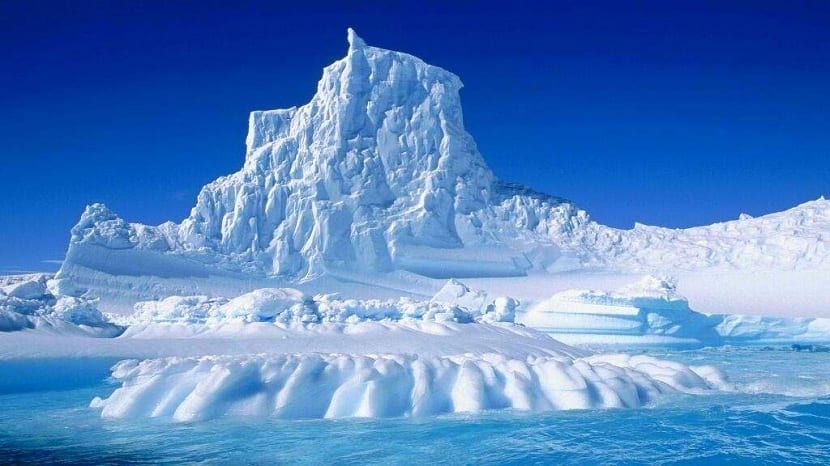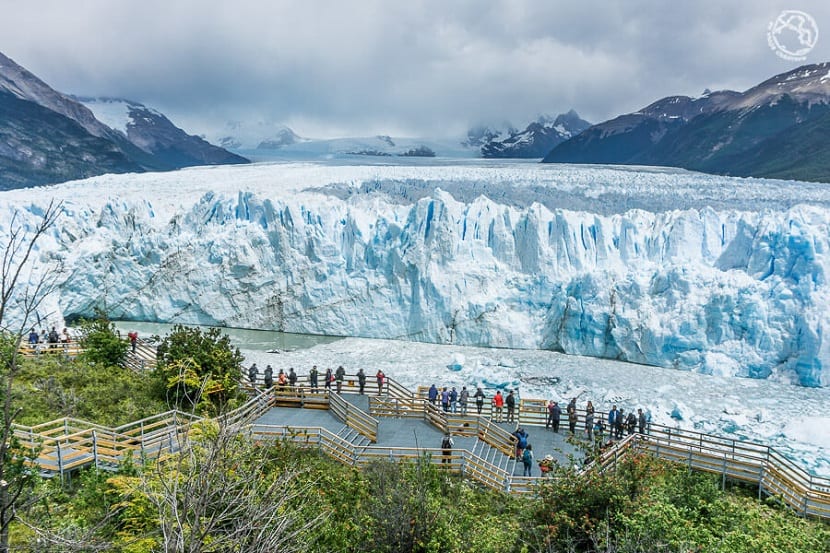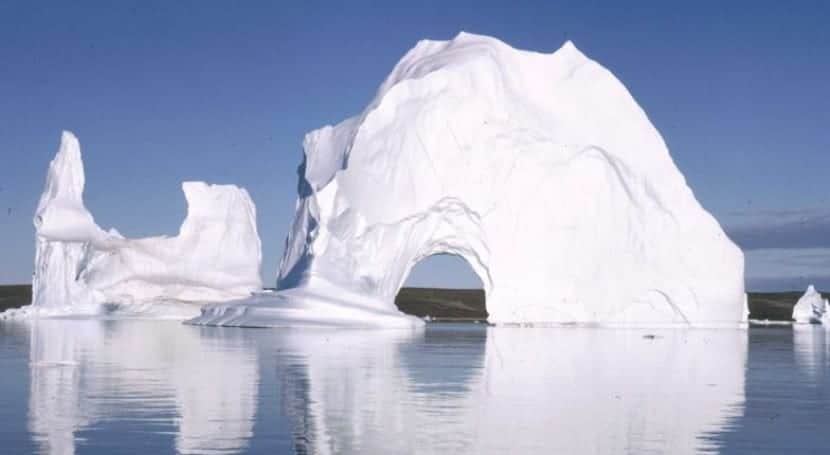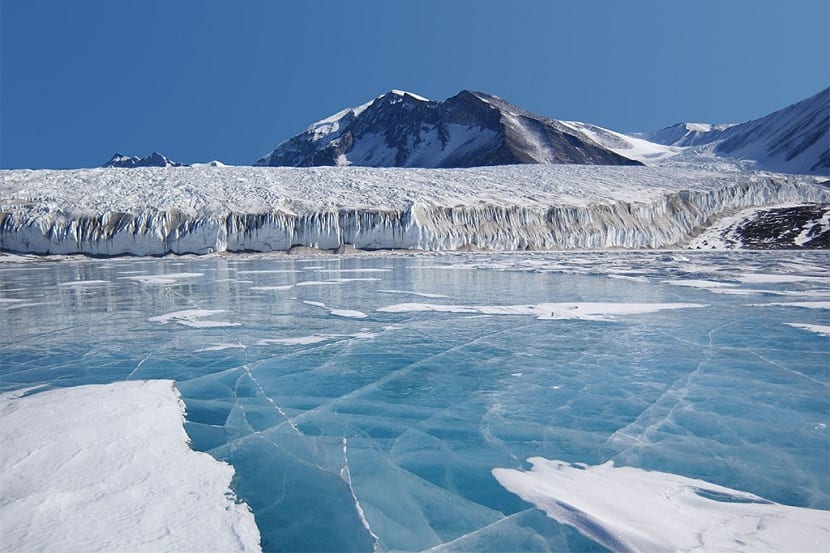
On our planet there are large masses of ice that cover the north and south poles. This ice is not only in the sea but is also found in the mountain ranges. These ice masses are known as glaciers. When these glaciers reach such a large magnitude that they usually cover entire and extensive areas, they are called polar ice caps.
In this article we are going to tell you all the characteristics, importance, dynamics of these polar caps and what would happen if all these ice masses end up melting.
Formation of glaciers

To make way for the polar caps, it is first necessary to know how glaciers are formed so that they can spread in such a way that they eventually build a polar cap. All the ice coverage that spread during the last glaciation or ice age make up glaciers. These glaciers are of great importance as erosive agents and builders of relief, soil and landscape.
Another reason why they are important is because they constitute a great source of fresh water on the planet. There are many living beings that take advantage of the summer meltwater of the glaciers to stay alive, reproduce or make it their natural habitat.
These glaciers are formed by accumulating, year after year, the snow that falls on the bottoms and slopes of the valleys. They are located in high mountain areas. The thickness can reach a large proportion if the snow that is lost due to the summer thaw is less than that which accumulates during the snow season.
The compact mass of this snow is produced because each snowfall is compressed on the one that was previously deposited previously. If the heat of the melt succeeds in melting the ice, it will cause it to thicken and begin to move toward the bottom of the valley.
The density of snow usually increases with depth as there is a greater amount of snow per unit area, being more compact. This smell that they have is the base of the glacier and it flows as if it were a liquid. Inside the glacier it moves faster than the lateral areas, so there are often breaks, strains and stretching that make upper cracks visible.
Glacial dynamics

The glacier is moving and uprooting the rocks that are projections that are in its path. The rock fragments that result from this movement of the glaciers are known as moraines. The area at the end of the glacier is where the thaw is formed. Here, you can see the formation of some small hills that are called terminal moraine.
As long as the glacier is maintaining an accumulation zone in the upper part of snow from precipitation, the cycle of the glacier will remain alive. Finally, in the lower area, the glacier melts, forming small streams of fresh water.
There are some glaciers that flow through the valleys at the foot of a mountain system. When they come together to form a larger glacier it is known as the piedmont.
Polar caps and ice cap

Once we understand what a glacier is, how it forms and what its dynamics are, we proceed to describe the polar ice caps. If the aforementioned glacier covers real plateaus and islands in high and low latitudes, it is known as the polar cap. These polar caps tend to be born in the alpine glaciers and go down the valleys. Finally, they reach the sea on some occasions.
If the glacier is so extensive that it covers the surface of an entire continent, it is called a continental ice sheet. This occurs with the polar ice caps of the Arctic and Antarctica. This great layer of ice flows outwards until it reaches the oceans and that is where it fragments into different sizes forming icebergs.
The term polar caps is used to describe the different ice masses found in Antarctica and Greenland. Thus, Whenever we talk about global warming or climate change we talk about the melting of the polar ice caps. These polar caps at both poles were formed in the Pleistocene ice age, in the Quaternary period and came to cover most of the entire Northern Hemisphere.
A polar cap is known as a glacial mantle and usually have an extension of more than 1,8 million square kilometers of surface. In terms of thickness, they are at 2.700 meters maximum. These polar caps are covering most of the surface of Greenland. The bedrock only emerges near the coast where the glacier is not strong enough and it fragments forming ice tongues. When the tongues reach the sea, they break further into pieces of ice during the thaw season, forming icebergs.
Icebergs have their own dynamics and they disappear over the years. A polar cap of this dynamic covers Antarctica, only this glacier it has an area of 13 million square kilometers.
What would happen if the polar ice caps melted?

With climate change and the increase in the greenhouse effect, there is talk of the melting of the polar ice caps. The immediate effect of this is that the sea level would rise. Consider that the ice masses concentrate almost 70% of all the fresh water on the planet. If this water, that is on a land surface ends up melting, it will end up in the sea.
Scientists estimate that by the year 2100, sea level will have risen an average of 50 centimeters from sea level. This means that many coastal cities will be negatively affected and many other ecosystems will have to adapt again. In addition, the albedo of the earth it will also be affected since there is less white surface that reflects more incident solar radiation.
I hope that with this information you can learn more about the polar caps and the consequences of their melting.